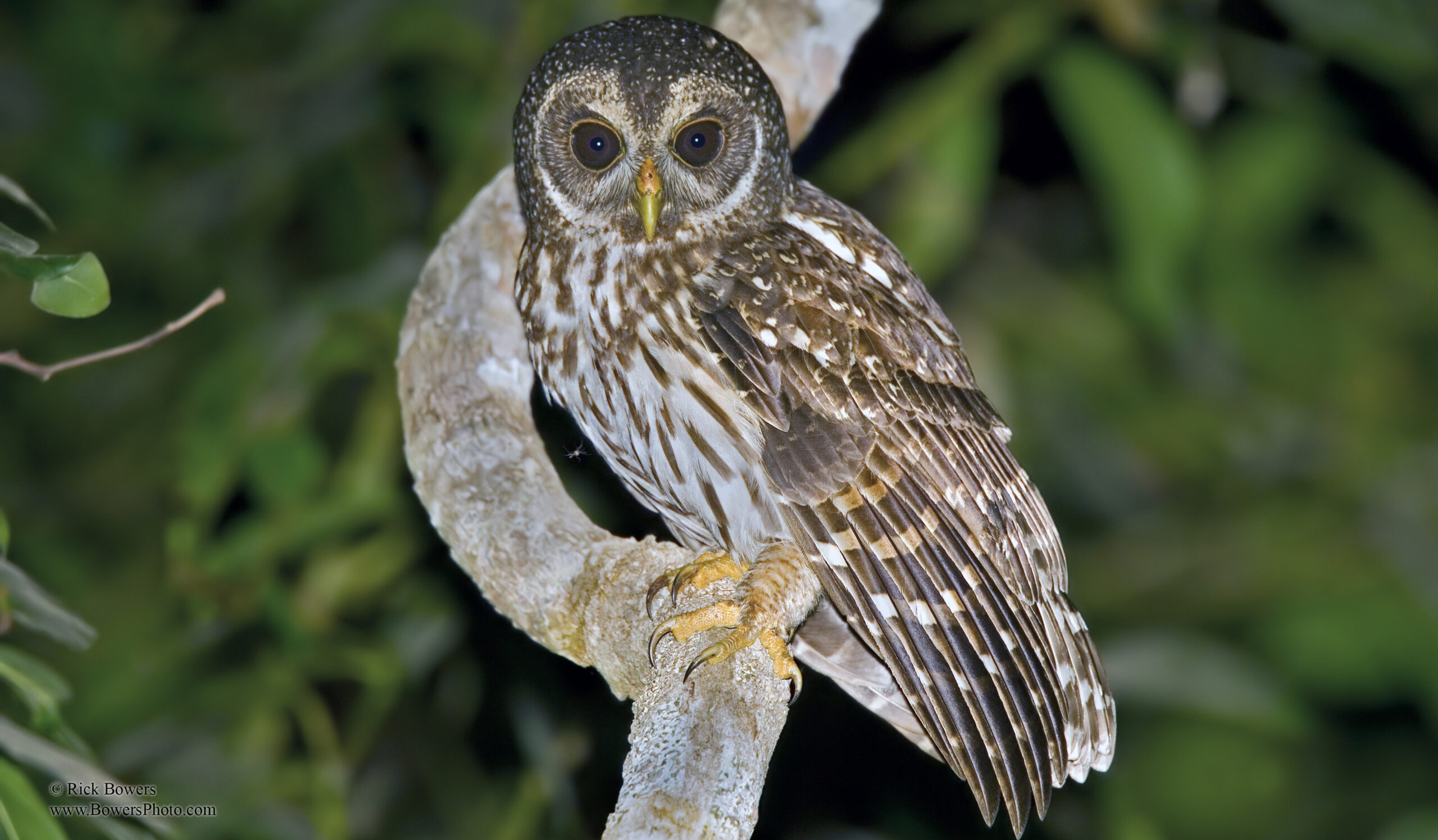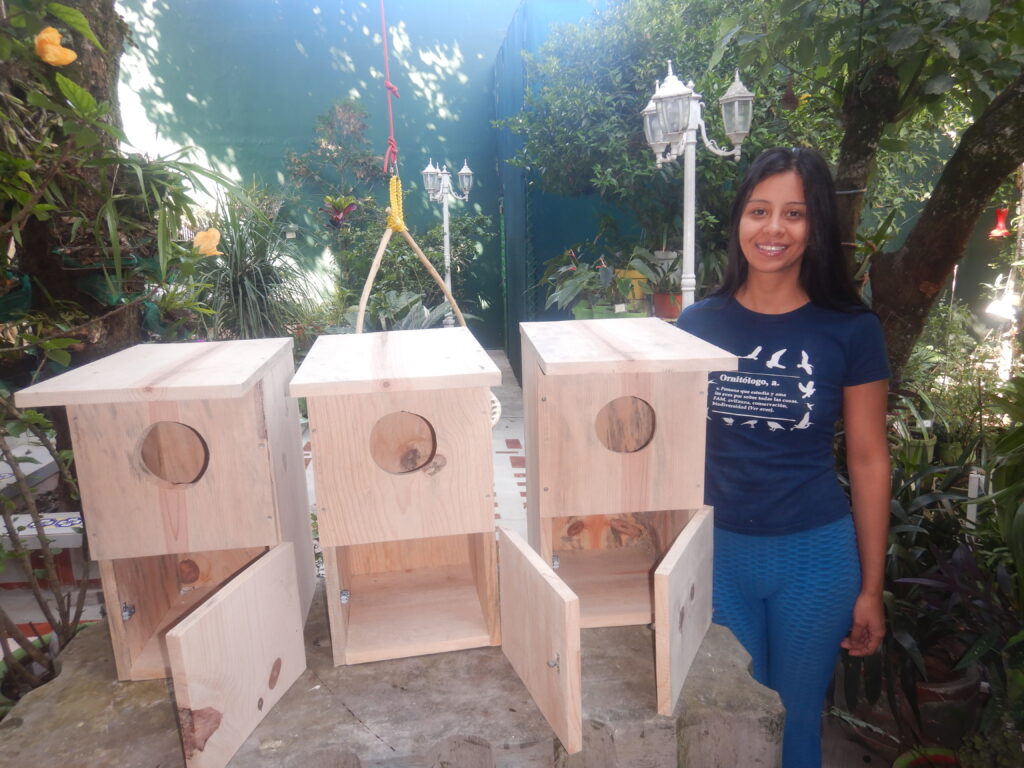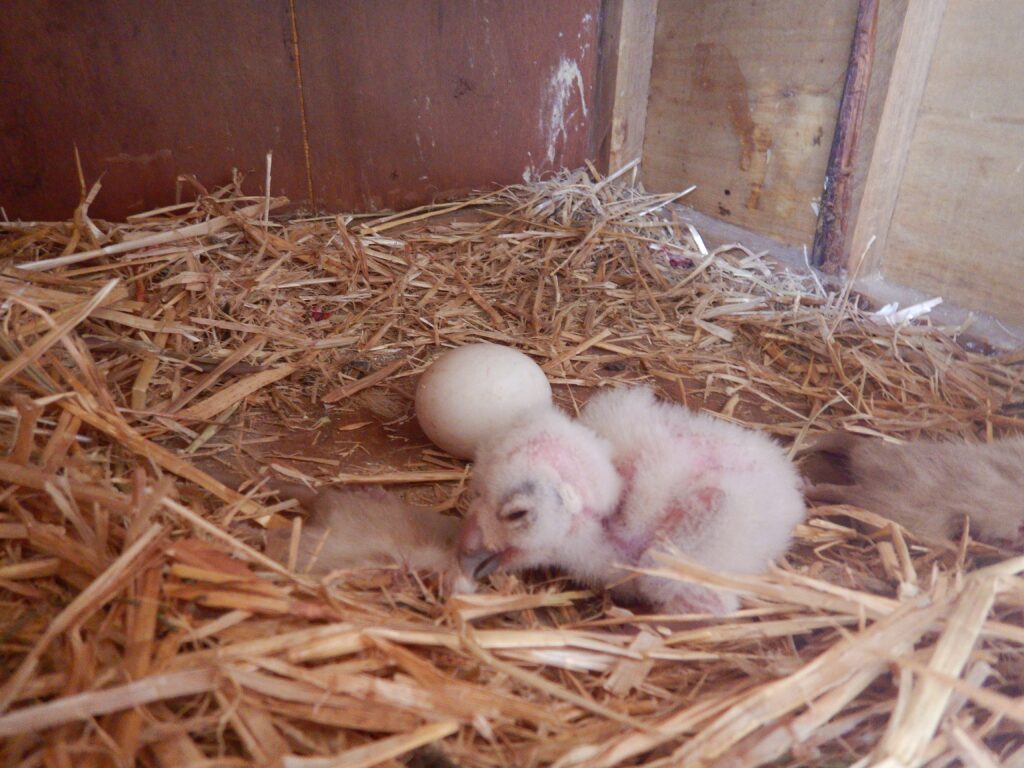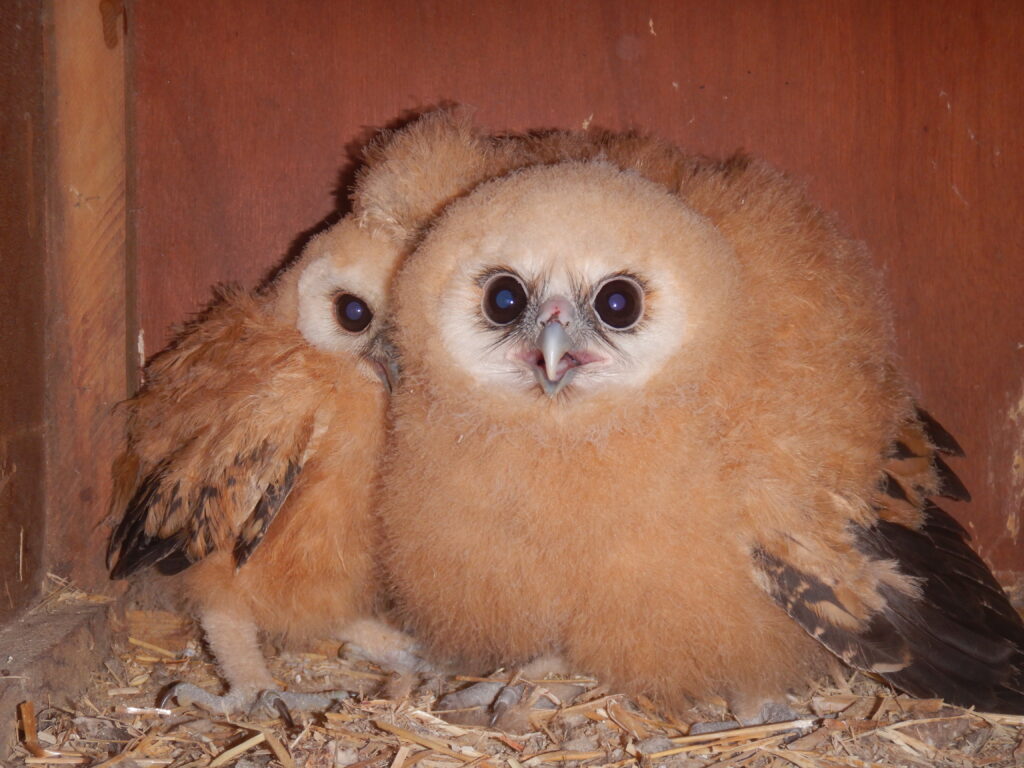 Photo ©
Rick Bowers/Macaulay Library
Photo ©
Rick Bowers/Macaulay Library
By Diana Gissell Juanz-Aguirre, Instituto de Investigaciones Biológicas, Universidad Veracruzana; Alberto Hernández-Lozano, Unidad de Manejo para la Conservación de la Vida Silvestre “La Coruja”; María Guadalupe Juanz-Aguirre, Unidad de Manejo para la Conservación de la Vida Silvestre “La Coruja”; Minerva Hernández-Lozano, Facultad de Química Farmacéutica Biológica, Universidad Veracruzana
In 2018, the Xalapa Wildlife Conservation Management Unit (Unidad de Manejo para la Conservación de la Vida Silvestre, or UMA) was granted a permit by Mexican authorities to prioritize the reproduction of the Mottled Owl (Strix virgata) given reports that its population may be diminishing due to habitat loss (Dugger et al., 2005). The species is adapted to anthropogenic changes (Lee and Bond, 2015) and can serve as natural pest control in cities, and so collaborators from Veracruz University worked with the Xalapa UMA to begin the repopulation of this species in the city. To assist with the repopulation, our plan involved working with non-releasable captive owls (i.e., those in captivity due to injuries or other reasons). We set up enclosures according to dimensions recommended by Miller (2012) to offer the birds ample space for their activities. Each enclosure was developed with a metallic structure, wire mesh, concrete ponds to provide water at all times, and hunting areas. Simultaneously, environmental enrichment was considered an important part of their captive management (Contreras and Ubilla, 2013; Linhares, 2013; Racciatti, 2014). Because this species typically nests in tree hollows, among the most important accessories within the enclosures were the custom-made nest boxes.

Crafting A New Nest Box
Diana Gissell Juanz-Aguirre shows off three first-of-their-kind nest boxes to be used in a captive breeding initiative for Mottled Owls (Strix virgata).
The installed nest boxes were created using 1″ thick pine wood, with dimensions of 60 cm long by 30 cm wide, an entrance hole of 12 cm in diameter, oriented south, without additional perches or chemical treatments, and with a hinged door on the front to facilitate cleaning and monitoring. We equipped the interior with a thermometer-hygrometer (an instrument to measure temperature and humidity), as well as a camera to allow documentation and evaluation of parental behavior. Barley straw was added as a nesting substrate, and we minimized human contact with the owls as much as possible during this process.

Just Hatched!
Recent hatchlings cannot thermoregulate and must be kept warm by the brooding female.
For Mottled Owls in particular, no literature exists describing their behavior in detail, due to the many difficulties involved with carrying out such studies. Therefore, under these artificial conditions, we paired owls during seasons between enclosures to observe affiliative behaviors and to consolidate breeding pairs. In 2019, incubation was observed for the first time, but the eggs did not hatch. However, reproductive success occurred from 2020 to 2023 (see graph, below right), and we were able to obtain other data, such as reproductive behavior, asynchronous egg laying every three days, the incubation process from the end of January or belatedly in March, with a duration of 30 to 40 days, as well as details of the parenting process. At hatching, the nestlings lack feathers and can barely support themselves. Within a week, they possess yellow downy feathers, a wide, light-yellow beak, and make high-pitched calls within the nest box. We learned that the female remains in the nest box days before the start of incubation and does not leave until the second month. After four months of parental care, the mother covers the young with her feathers, holding her wings as a protective barrier while the male hunts and provides food, entering the nest frequently and interacting by grooming the female and the young.

Early Results
Since 2020, seven eggs have hatched in the breeding program.
Once the young come out to explore the surroundings outside the nest, they molt their initial down. They must exercise, learn to fly, be alert, and imitate the behaviors of their parents. At the end of June, young are separated from their parents and enter an enclosure where they can move freely. Their welfare is monitored periodically (Hernández-Lozano et al., 2022) and beginning in July or August, our staff prepares them for release into the wild.
Young owls are weighed, and their morphometric measurements are recorded regularly every month from the first month of life, to note changes in their plumage. This occurs until the day before their release. They are also identified with leg bands with a unique alphanumeric code.

Born To Be Wild
Although their parents cannot be released, these owlets will one day join the wild population.
We were able to obtain valuable data about reproductive behaviors and parental care in captivity, while at the same time boosting our local population. Using the same nest box design in the wild, comparisons to natural nests could be made. Our initial findings have helped raise awareness among local authorities about the importance of providing nesting sites in existing parks and natural areas within the city of Xalapa. We are working with the city to install more nest boxes, and we’re hopeful that this will promote the availability of nesting sites for Mottled Owls in Xalapa.
Participate
NestWatch is pleased to offer a new bilingual nest box plan for Mottled Owl, created in collaboration with Unidad de Manejo para la Conservación de la Vida Silvestre. Mottled Owls remain poorly studied despite being fairly common throughout their large breeding range, and there is much to learn about their nesting success in the wild. If you live within the breeding range, we invite you to install a nest box and report any nests to NestWatch. It is also important to leave trees with large cavities standing as natural nest sites.
References:
- Contreras, O., C. Ubillas, and M. Carvajal. 2013. Evaluación del bienestar animal de aves rapaces en rehabilitación, descripción de técnicas que lo promuevan y mejoren su tasa de reintroducción. Avances en Ciencias Veterinarias 28(2): 1-12.
- Dugger, K., F. Wagner, and S. Gail. 2005. The relationship between habitat characteristics and demographic performance of northern spotted owls in southern Oregon. The Condor 107: 863-878.
- Fernández, R., A. Quintana, and N. Panglieri. 2013. Implementación del enriquecimiento ambiental para el mejoramiento del bienestar animal en aves rapaces nocturnas en el jardín botánico y zoológico de Asunción. Compendio de Ciencias Veterinarias 3(2): 7-12.
- Hernández-Lozano, A., L. López de Buen, C. Ahuja-Aguirre, P. Paredes-Ramos, and D. Juanz-Aguirre. 2022. Aves rapaces nocturnas en cautiverio: estudio en búho Ciccaba virgata (Strigidae). Revista MVZ Córdoba 27(3): 1-11.
- Lee, D. and M. Bond. 2015. Occupancy of California spotted owl sites following a large fire in the Sierra Nevada, California. The Condor 117: 228-236.
- Linhares, A. 2013. Estudio de enriquecimiento ambiental en aves de rapiña en recuperación. Tesis de maestría. Escuela de ciencias, Universidad del Miño. Brasil. 135 pp.
- Miller, E. 2012. Minimum standards for wildlife rehabilitation. National Wildlife Rehabilitators Association, 116 pp.
- Racciatti, D. 2014. Bienestar animal en fauna silvestre: ¿es posible?”. I Jornada de bienestar animal. Buenos Aires, Argentina. 2 pp.
Question, are these owlets taught to hunt using live prey
I.E mouse before their release into the wild ?
Thank you
Faith
Hola!, así es, se cuenta con un criadero de alimento vivo (roedores), para abastecer la demanda alimenticia de los búhos. Dentro de los recintos se encuentran espacios habilitados para incentivar la cacería de presas vivas